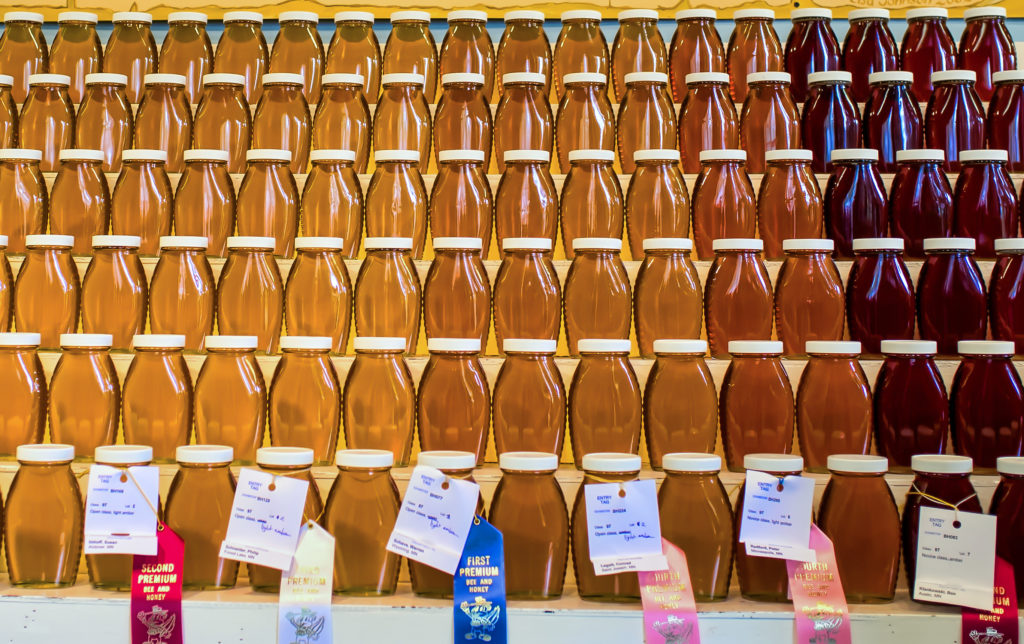
The Photograph (Above), Titled “Honey Champs”, Has Been Highly Regarded Wherever I’ve Shared It Online or in Photography Competitions.
I believe that the reason for this is the use of rhythm in the composition.
You might say to yourself, “Yeah! Self! There is obviously repetition here, and that’s what everyone likes…”
I am going to make the case that there is a difference between repetition and rhythm.
Think about that for a moment…
If you were sitting in your car, and a song came onto the radio, and the song played the same note over and over again, would you enjoy that song?
Probably not, and guess what, that would be repetition.
Humans love rhythm. From music, to dance, to marching bands, to synchronized swimming, (to all forms of visual art including photography) – rhythm fulfills a need within us. This is an absolute truth with photographs as well.
Viewers will respond more positively to your images- if you include a sense of rhythm in your compositions.
So… is just plain old repetition bad? No!
My point is- if you train your photographic eye to identify not only repetition, but also a sense of rhythm within that repetition- your photographs will excel.
Where is the rhythm in my photograph, “Honey Champs”? After much thought, I believe it is established with the varying shades of yellow within the bottles.
The Jar Caps Are a Repeating Pattern. They Initially Capture a Viewer’s Attention.
It’s just like a fantastic opening line in a novel.
You read that first line, it captures your imagination, and you must go further into the story. The publishing industry refers to this as, “the hook”.
The honey jar caps in this photograph are “the hook”.
The rhythm lies in the varying shades of color within the jars. It tantalizes the eyes. It creates thought about what, why, when, where, and how (aka story).
Going back to our novel analogy- this is the all-important first few paragraphs in chapter one. It will likely decide if a reader continues to move forward, or set the book down.
Finally, in the “Honey Champs” photograph, the eyes rest at the bottom- taking in the various award ribbons. An “ah ha” moment occurs. Our photograph now has a complete story.
This would be the final moments of a musical piece, or an “outro” as it is called. Or, in our novel scenario, it would be the “denouement”.

I want you to grab a piece of printer paper…
This is great exercise. You’ll learn something that you’ll be able to use with your photography for the rest of your life.
Look at the “Honey Champs” photograph again. Using your paper, block off the bottom row.
Is the photograph as strong? Is the rhythm still there? Does the story play from beginning to end?
Now, take your paper and block everything to the right of the blue ribbon. Ask yourself these same questions.
Finally, take your paper and block everything from the blue ribbon to the far left edge of frame. Ask yourself the same questions.
There is no question in my mind that any of these changes disrupts the rhythm and removes the visual power of this photograph.
I believe that this is a secret ingredient that many photographers overlook.
From my own experience, developing a sense of rhythm, within a photographic composition, is a lot like going to the gym and exercising muscles.
The more you use the technique- the easier it will become. Starting out, it might feel hard- like you’re not sure what you’re doing. But you’ll get there with perseverance.
Does repetition and rhythm always have to occur together? I don’t believe so.
Imagine the rhythmic melody of a Korean Pop singer versus the guttural utterances of a coffeehouse hippie reading Haiku. They both have rhythm! It’s just very different.
The key to becoming the outstanding world-famous photographer (that we both know is hiding inside of you) is to identify your own sense of visual rhythm and apply it on a regular basis to your photographs.
What are some of the tools of composition that can help establish visual rhythm?
- Patterns
- Texture
- Stacking
- Dynamic Angle
- Interplay of Light & Shadow
- Spot Color
- Focal Point
(Note– If you want to learn more about using these advanced tools of composition to create images that tell your story & express your vision, take at look at my guide, Advanced Composition)
This is an important point-
Rarely does a single element of composition create a memorable photograph. It can happen! However, typically your photographer’s mind must take in multiple elements, and organize them, to achieve greatness.
Think about the “Honey Champs”. There were 5 tools of composition at work. They were: repetition, pattern, texture, interplay of light & shadow, and spot color. When we removed any of those elements the photograph lost strength.
Let’s take a look at some of these different tools of composition- independent of each other.
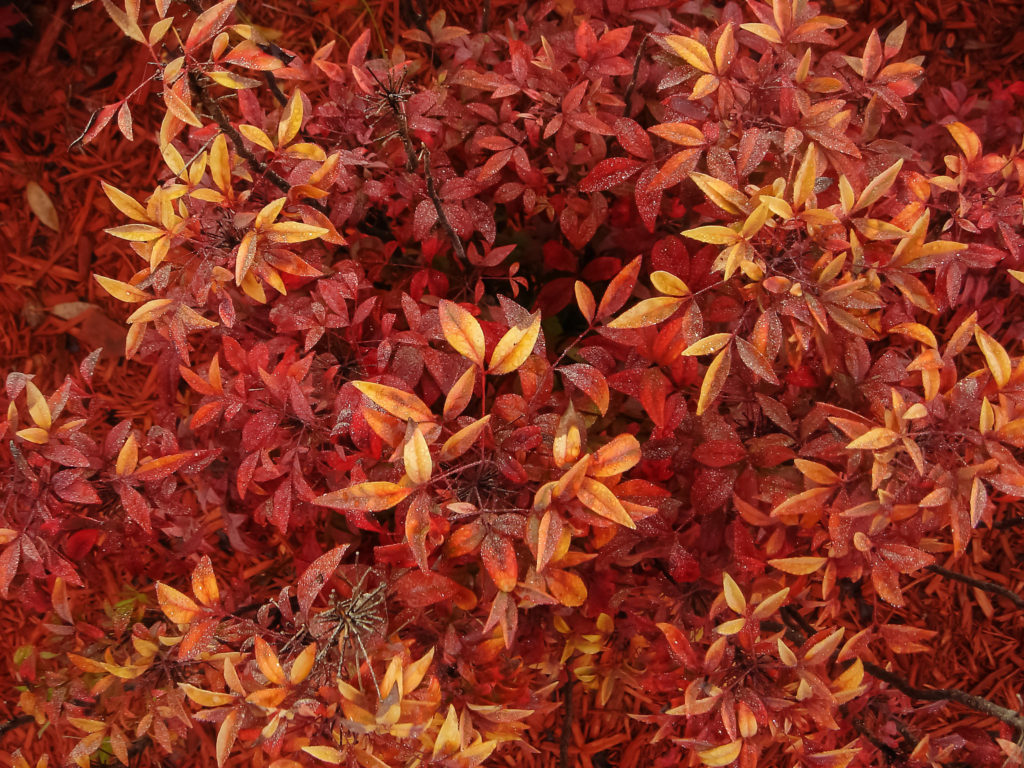
The photograph above is titled, “Red & Yellow Leaves”. If you read my recent blog post here on Light Stalking – regarding the color “RED”- you would think this image would be wildly popular.
However, it’s never really garnered that much attention, despite the fact that it’s pretty, and it’s a subject that many people love.
This photograph definitely displays repetition and pattern. Does it have rhythm?
I don’t think so. I liken this image to having an entire orchestra sitting in front of you. Each musician picks up their instrument, and despite the fact that they are going to begin and play a piece of music in unison, each one chooses a different chord.
There is unity, but no rhythm.
There is nothing wrong with this photograph. I have a framed copy hanging on a wall in my house.
Think about this “idea” in terms of your photography. Why do certain songs sell millions of copies and go Platinum? Where others achieve some success and then languish. It’s because of universal appeal.
We photographers are artists. An artist can see their work one of two ways…
We can simply try to please ourselves, or we would like to see our work appreciated by the world at large.
We are either creating garage band music- or we want our work to go Platinum.
Most of us want to see our work go Platinum.
Incorporating “rhythm” is that hidden element that can give you success over your competitors.
When I say that, I mean, “finding your rhythm”, because each of us is unique in that sense.
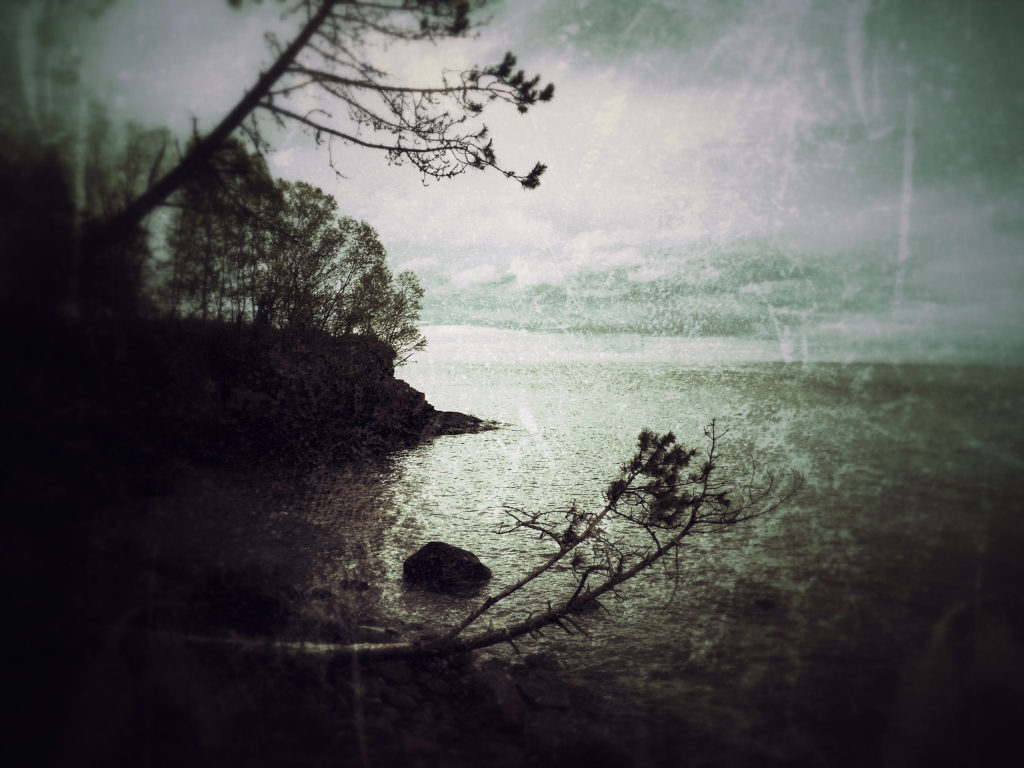
This is a relatively new photograph of mine, so I can’t judge it by the reaction of the world at large. After much introspection, and giving it the “paper test”, I believe this image does have a rhythm.
It feels like a refrain, a swirling melancholy beat, that signals something is about to happen, or something very dark already did happen.
The music, in my mind, (the rhythm), is established through the compositional tools of texture, light & shadow, stacking, and in this particular case- a focal point.
(You probably think I’m crazy? Right?)
I shared this photograph, and my feelings about it, because I would like to encourage to you open up your artistic nature. Explore your feelings about your world, your photography, and your choices in music, literature, artwork, movies, and theatre. All of things reveal your personal rhythm to you, if you’re listening.
When you embrace your personal rhythm- people will notice your photography.
I have one more example to share with you. Before I do, let me tell you a short story about myself.
When I first started my commercial photography studio, I had no idea what I was doing. I knew how to use cameras and lighting gear. I knew how to make a shot technically correct.
What I didn’t understand was how to apply myself, to the process, so that clients “wanted” to work with me – specifically. Discovering this took me years of frustration, learning, and just plain old being a hardhead and not giving up.
What I’m discussing with you today, in this article, is the lesson that took me years to learn. I finally discovered my own rhythm.
I used to do quite a bit of work for a national magazine related to the agricultural industry.
The graphic designer of that magazine would hire me on a fairly regular basis.
Over the years, I began to notice something. Whenever she called, the first thing she would say (after saying hello) was, “I need the Kent DuFault twist.”
“The Kent DuFault TWIST”…
My rhythm had developed, and she could SEE my music!
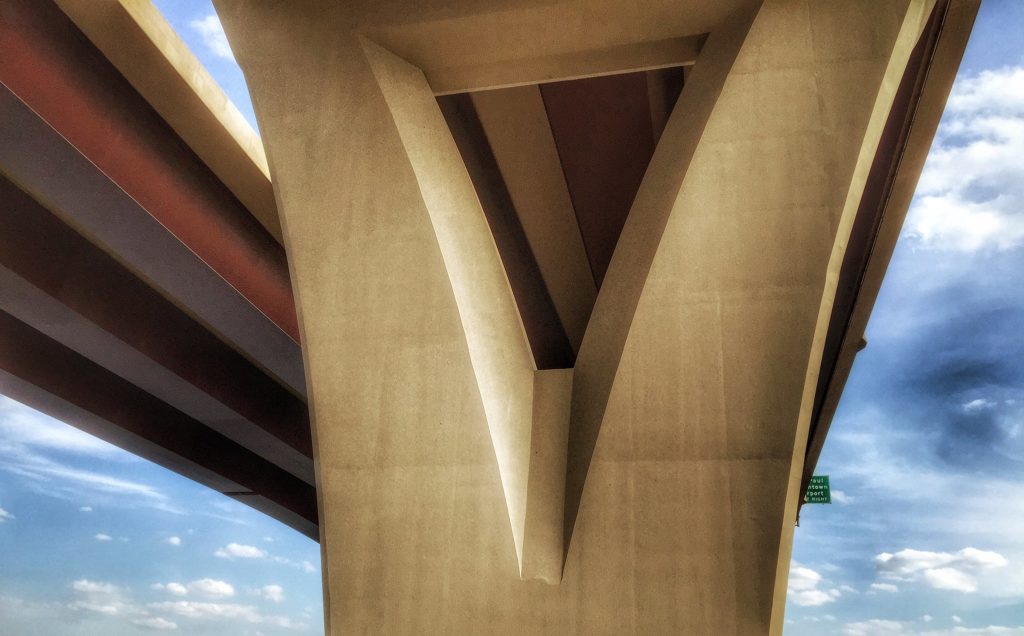
The photograph of the bridge is very indicative of the Kent DuFault Twist, or what I now refer to as my rhythm.
I often see the world in angles and patches of color. For reasons, that I can’t even explain, my photographs often reveal triangles. That might seem like an odd comment- that I can’t explain it. However, I’ve been creating photographs for so long, it’s like I’ve been going to the gym my entire life, and my muscles are all bulging, and I can’t even feel the weights anymore. I’m also very drawn to spot color, and finally, I like to find a sense of a complete “story” in my photographs.
The bridge photograph incorporates dynamic angle, texture, pattern, repetition, and spot color to create my personal rhythm, (that hopefully), resonates with as many folks out there as possible.
I don’t worry about going Platinum anymore, but I do hope you feel the rhythm! I feel it, and that’s good enough for me.
I hope you take these ideas and explore your own personal artistic path.
If you would like to know more about rhythm and composition, click here.
You’ll get some information on my “Advanced Composition” eBook. It explores these in-depth ideas on art and composition.
It will help you produce images that tell your story & express your individual creative vision. If you enjoyed this article, you’ll definitely enjoy this book.

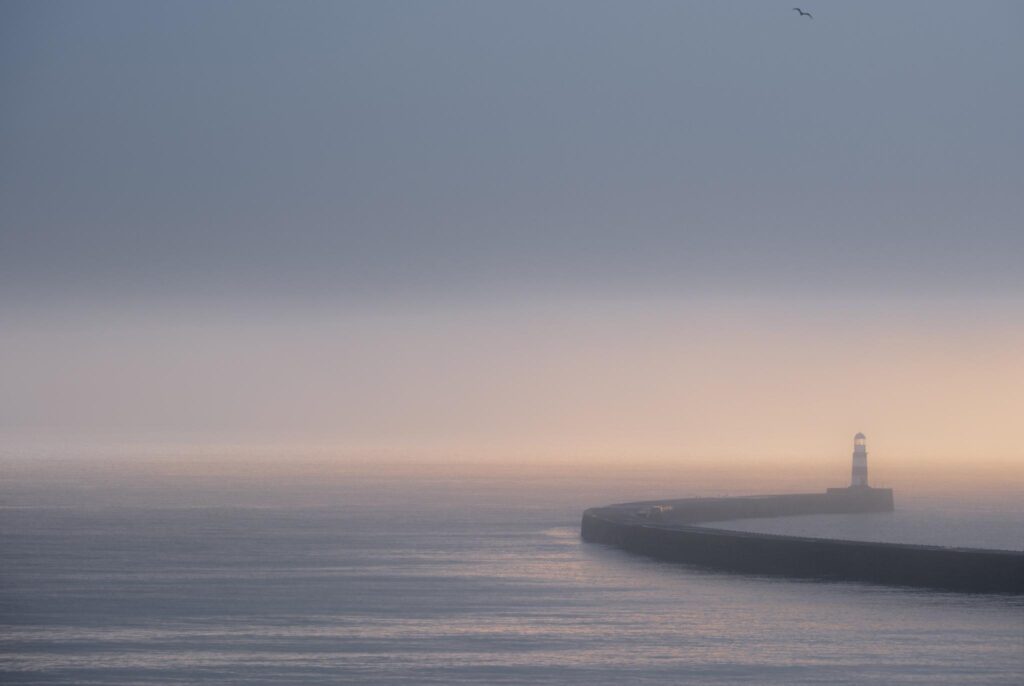



34 Comments
Thank you, got me thinking… a lot
And… That makes me happy!
Good Article here….
Being a one-time musician, Sax = Alto and Tenor (Jazz), I Know that it has helped me to be a Photographer – and the one that I am today. You may quote me on this statement:
“I ‘see’ the Music with my ears…. I ‘hear’ the Light with my eyes.”
James….
Love it, James! Thanks for the comment.
Kent, Very interesting article. I’ve never thought, at least consciously of a rhythm, which will probably make this a hard muscle to develop. Can’t thank you enough for making us all more aware.
– Cliff
Thank you Cliff for your comment Cliff.
When I take a photo and edit it, what I am looking for is that I want my photo to SING! And not just sing, but I want people to feel the song. I could never explain what that really meant, until I read this article. You really hit a note in describing what it means to bring out in a photo, a song.
Awesome Beth. Please share a photo or two on LS and let me know. Kent
Excellent article, Kent – thanks for the insightful explanations. I’m beginning to see a “rhythm” in my photography, developed unconsciously as I sought out key visual aspects that appeal to me as primarily a landscape photographer. Now I’ll be much more conscious of seeking rhythm and work harder at developing those muscles. Much appreciated writing, thank you.
You’re welcome. And, thank you for the comment. I love hearing from readers.
Great way of explaining something that many may already be doing, via composition rules that have become part of ‘the rhythm’ of shooting, but haven’t been conscious of it. This will give photographers more to think about as they’re looking at those compositions. Your “Twist” is your style that you’re known for. I like that, I might have to start calling the unique style I’m known for as “My Twist” too.
Another interesting aspect that I’ve looked into, is how many photographers are actually musicians too. There’s actually a pretty high percentage that if they’re not musicians, they’re writers, painters or some other creative outlet. I’ve been a mutli-intrument musician for most of my life. I was also a double-instrument music major for two years, then switched to and graduated as an Electronics Engineer. I realized that I’m much better at electronic design than at being a performing musician, and it pays better. That turned into a string of companies I started in the music industry over the last 25 years, using my creative juices there. And now, I’m a photographer & instructor, where there’s little money again, but I still use my sense of rhythm.
Great story! Thank you for sharing Tony!
I don’t think you are crazy 🙂 The repetitions that have some changing in them, something that shows direction or leading the eye by gradients, shape or colors greatly contributes to a good picture. Having said that, I think your first photo (bottles) could just as well be one of those I would not push the Like button if it was on FB. I don’t think it is bad, I think it is chaos. When you asked to place paper and hide portions of it, I could really find out WHY I felt that way in the first place. When I hide the lower part (bottles with ribbons) I actually get a nicer feeling than with that row, but somewhat boring. I then stared at it for few seconds and figured out: There must be one bottle missing or one bottle that is breaking the nice gradient of colors or something like that. Maybe it is just me, maybe I am crazy? Maybe it is my different rhythm? But for sure it felt strong enough for me to spend that many lines as a reply
Hey! What else could I ask for… The post helped you discover something about yourself, and that makes me happy. Cheers, Zakie.
Very good article Kent; Its what brings my clients back so much and
seeing just what sells in my small stock photography business. Nicely done.
Thank you for your comment, Joseph. Cheers!
Good article Kent, being a musician for 50+ years, it makes complete sense to me.
Thanks Lee!
Hi Kent
I just wanted to take a moment to let you know that I enjoy your photography articles so much. I have been doing photography as a hobby now for several years and I always feel like I have learned something new after reading your articles. I love the rhythm in your photos.
I do have a question though, here recently I just have seem to be having a problem with remembering f stops, apertures ect.. And I am not happy at all with how my photos are turning out.. I know I know this, Has this ever happen to you? Do you have any suggestions that might help me with this..I appreciate any advice you might have to offer. Thanks so much.
I look forward to reading more of your articles and seeing more of your wonderful work.
Best Regards
Thank you for saying so. Comments, such as yours, mean so much to me. I understand what you’re saying. Aperture, shutter speed, ISO, white balance, these are all critical settings that can make or break a photograph. Yes, that did happen to me- albeit a long time ago. My suggestion is to take one aspect- say shutter speeds- and devote a period of time to learning everything you can about using shutter speeds. I don’t mean just reading about it (although that’s a good start)- but actually getting out there and taking pictures while concentrating on your shutter speed settings. Try using fast speeds, slow speeds, really slow speeds, brace the camera, use a tripod, try panning… Take notes… evaluate your results without becoming bogged down by the resulting pictures. Then repeat with the apertures, different ISO settings, and White Balance Settings. Once you understand each of them individually- begin to closely look at how they work together… You’ll get there. Cheers.
G’day, Kent
Different people have different reactions to different photographs. But you know that.
After some introspection and to background music of a stirringly soulful cello, with rising and falling cadences, your photograph elicited my response:
Passing of a storm.
Cleansed and refreshed elements
Emerge into light.
Don’t knock us old hippies – some of us hear music in an image, others can see a story.
🙂 george
I like it, George!
Thank you for the inspiration. It led to this photo:
Thanks for the comment Lyn. I don’t see your photograph.
Your article has really helped me with creating the shot…It has taken me three years to learn my Canon, the photo triangle, how to save and store images, how to uses LR and PS. And now I am trying to make the picture that I see in my minds eye….Thank you for this well presented set of clues…..
Awesome!
Timely article for me to read as I am about to be challenged to think about why I am taking a particular photo and what I am trying to say with it. I’ve had a real struggle mastering the technical aspects, and as fast as technology changes that’s probably going to continue. Thinking about my images as art is even more daunting. Your explanation of finding rhythm made it a little less daunting. Thank you!
That’s great, Charlotte. Remember, one of the fun aspects of photography is that it can be a lifelong journey.
Great article. For me photography has always been ‘visual music for the eyes’. I often see music particularly in moving water and reflections. I do love patterns and just love it when I have taken an image and when I view it on the screen I see a pattern or a flow or rhythm. Thank you for this article it has given me new inspiration!
Your welcome, Wanda. I love your comment!
I do understand what you are saying but as a lifelong drummer, musician and Music Educator and now photographer, I do not see rhythm portrayed here. What I see is volume. Rhythm has varying degrees and is not usually constant so as to produce interest. Volume also creates interest on different ways. If the different shades were interlaced and varied, that to me would be rhythm. But thanks for the beautiful photos and insight.
this article will make me look over and over again to see if I can find my own rhythm……………….. thanks a bunch !
Hi Kent,
Reading all the comments on your article I am very impressed. You have give a great path to me to see the photography the way a musicians sees it. I am not a musician but Educator in Photography-n-Photoshop. I have noted the contents given by you which will help me in future to get such rythmic shots. Thanks a vagon with warm regards,
Suresh Khaire
Vadodara-India
Kent –
The image of the water gets me today. This image tells a story so wonderfully. It’s so beautiful yet sad at the same time; I can’t stop looking at it. You are so talented, my friend. To me, this image represents hope. Darkness surrounds, but the light breaks through promising something new. Great work!